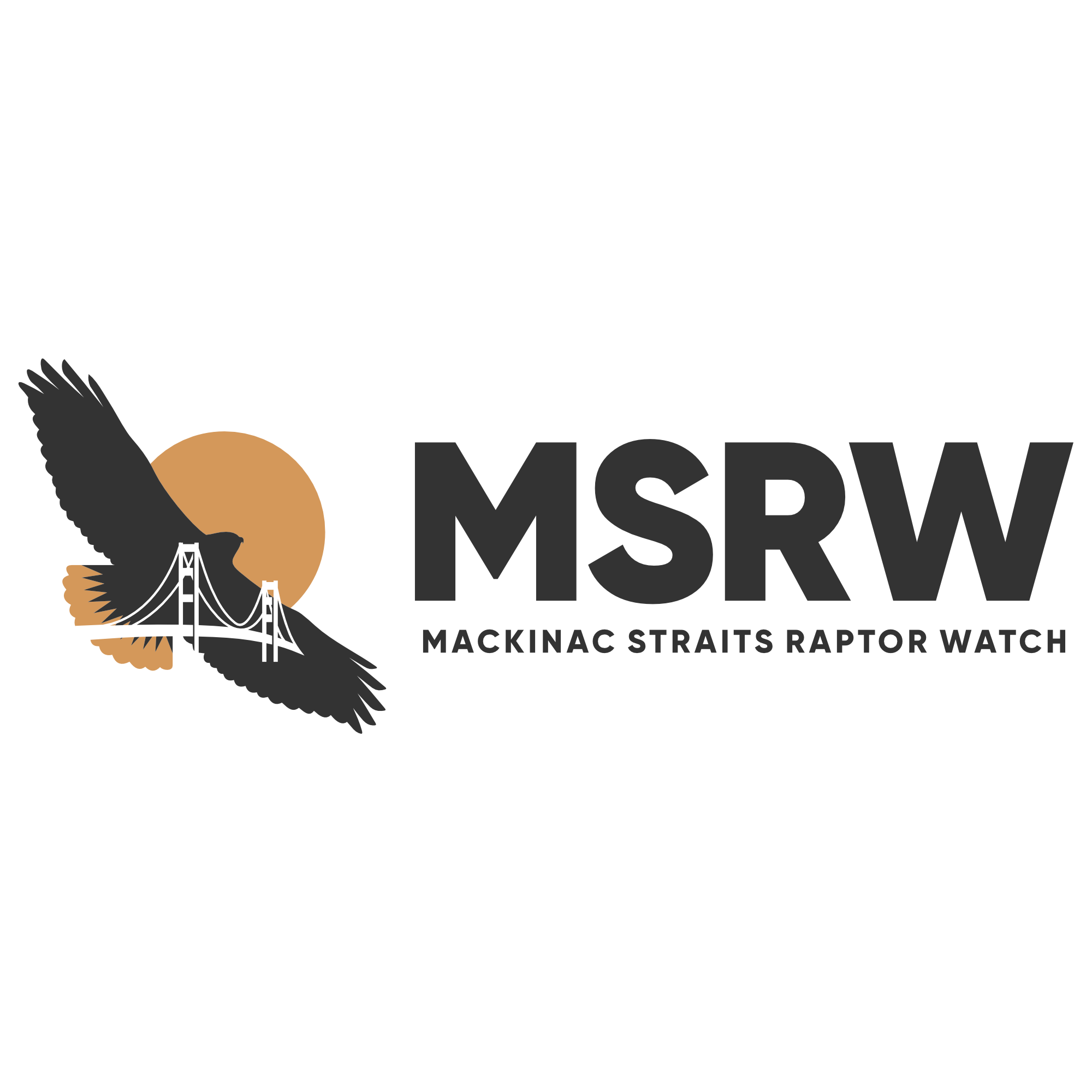Today was a foggy, hazy, and generally poor viewing day for waterbird counting. So ironically, today was the best day for waterbirds the Straits have had. There were constant flocks of canada geese migrating high over the bridge. The largest flock was only about 70 birds, but there were dozens of these throughout the day. 3 trumpeter swans flew south early in the morning as well. Trumpeter swans are distinct when seen up close because of their size that separates them from tundra, and the all black bills unlike those of mute and tundra swans.
Duck days have seemingly arrived. There were large flocks of “aythya sp.” migrating high and in the haze. Aythya is a genus of diving duck that encompasses redheads, greater and lesser scaup, canvasback, and ring-necked ducks. The scaup and redheads can be difficult to separate from a distance and in poor lighting, which is why many of these were left identified simply as Aythya sp. However, it was very cool to have these flocks starting to show up. I was able to pick out a large group of greater scaup and a half-dozen lesser scaup.
Other waterbirds graced the watch today as well. Common goldeneyes, mallards, red-breasted merganser, common merganser, hooded merganser, red-necked grebe, horned grebe, and common loon were all seen. Red-breasted mergansers had two sizeable flocks today which was fun to watch fly past. Still not many scoters, but a handful white-winged scoters were moving around today as well. No red-throated loons that I could find today, nor teal, gadwall, wigeon, or others. There were some groups that were left at “duck sp.” and so there is a possibility some of these species were missed due to the difficult conditions.
All in all, a very fun day at the count. Rusty blackbirds are still on the beach, and I now have a bird feeder set up to try and bring in some other birds of interest.

